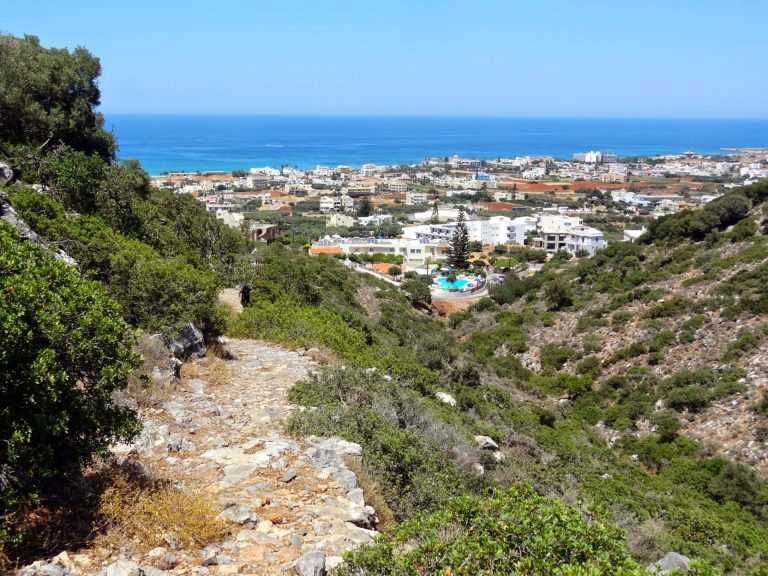
You are using the Free Edition of CreteAPP. For extensive information on Crete, GO PRIME with our comprehensive Greek Travel App featuring the full editions of Crete and 25more Greek islands & Athens.
Malia is one of the most touristic towns in Crete, located 35km east of Heraklion, on the outskirts of Mount Selena. Its name means “flat area”, because Malia is situated on a fertile plain. Indeed, it is famous throughout Greece for the delicious bananas grown in the greenhouses in the area. The valley has many springs and in the past was known for its windmills, used for watering the local potato crops.
Many years ago, Malia was a small coastal village with few residents. Malia has seen rapid growth in recent years and the town has expanded in all directions. Malia is known to tourists for the three “s” holidays, i.e. sand, sea, sex. Indeed, it is famous for the huge beach and the very lively nightlife, as thousands of young tourists drink in the clubs until dawn. In the early morning, Malia reminds of a bombed landscape with drunk youngs staggering and seeking the way to their hotel.
Malia has two main roads that meet at the center of town, in front of the church of Saint Nektarios. The first street is a pedestrian street connecting the old village with the beach. This is full of clubs and bars, where thousands of young tourists party every night. The second road is vertical to the first and is full of shops, cafes, supermarkets, banks, clinics, etc. Things here are much calmer.
SIGHTSEEING
Apart from the wild nightlife, Malia is famous for the archaeological site of the third-largest Minoan palace in Crete, in position Chryssolakkos or Tarmaros, east of the village. The name Tarmaros is considered to be the name of the ancient city of the region. The Palace of Malia was controlled by the legendary King Sarpedon, who was the son of Zeus and goddess Europa and brother of King Minos (King of Knossos). The Sarpedon was once evicted by Minos and moved to Lycia, in Asia Minor, where he was worshiped as a god. The palace of Malia was destroyed in 1700BC, rebuilt, and re-destroyed in 1450BC. Tombs with many golden objects have been found. Among these, the archaeologists found the famous jewel with the bees, which is exhibited in the archaeological museum of Heraklion. Unfortunately, before the tombs were excavated, they were already looted and nobody knows how many wonderful items have been lost. Near the palace, traces of an early Christian basilica and a marble sarcophagus have been revealed.
Furthermore, in the old village of Malia, you can stroll in the narrow traditional streets and visit the church of Panagia Galatiani, which was built with milk instead of water. You can also see the churches of Saint John the Baptist, the Archangels, Saint Demetrios and the Annunciation, St. George, St. Pelagia and Saint Sava (near the shore). The Church of St. George at Loutres has many old frescoes and was built there to protect the locals from the elves. Lastly, on the island just opposite the beach of Malia, the Church of Transfiguration is a lovely place for photographs.
If you have a car, you should drive 15′ north of Malia, to the traditional village Krassi. The route crosses a wild gorge with many carobs and oak trees. Krasi is famous for the huge plane tree of Krasi in the central square. You can drink your coffee in the square, eat in the taverns of the village and walk in the narrow streets. Lastly, at the square is a spring with clean cold water.
Sorry, no records were found. Please adjust your search criteria and try again.
Sorry, unable to load the Maps API.
